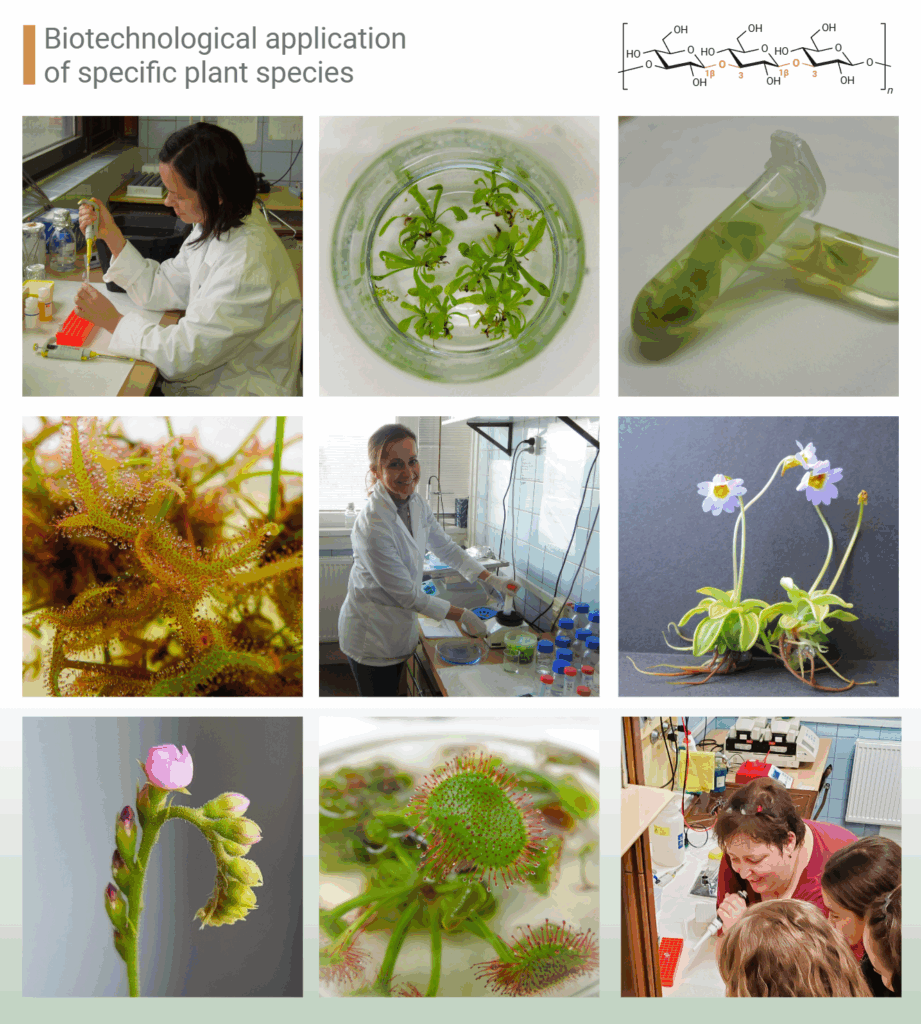RESEARCH INTEREST
We focus on isolating and characterizing genes for hydrolytic enzymes, specifically chitinases, β-1,3-glucanases, and proteases from underexplored plants. Currently, enzymes from carnivorous plants, which digest captured prey, are in the spotlight. Upon cloning, we introduce individual genes into an expression system, producing recombinant proteins. We characterize these enzymes from both biochemical and functional perspectives, evaluating their potential biotechnological applications.

METHODS WE USE
- cultivation of plants in vitro and extraction of nucleic acids from plant material
- different PCR assays (including quantitative real-time PCR) and genome walking
- agarose and polyacrylamide gel electrophoresis
- reverse transcription and rapid amplification of cDNA ends (RACE)
- molecular cloning and genetic transformation of microorganisms
- heterologous protein expression and affinity protein purification
- biochemical methods for enzyme activity detection (fluorometric assays and zymography)
- techniques of plant transformation using Agrobacterium tumefaciens
- restriction digest analysis and Southern hybridization
- light microscopy

RATIONALE
Plants have dozens of genes for chitinases and β-1,3-glucanases, playing roles in specific developmental processes and in the plant’s response to biotic and abiotic stress. In the case of carnivorous plants, both hydrolases along with proteases are involved in the digestion of captured prey. These individual chitinases, β-1,3-glucanases, and proteases are believed to have specific biochemical properties and adaptations to plant physiological processes. The digestion in carnivorous plants involves the formation of specific cocktail of hydrolases that efficiently release nutrients from captured prey. Elucidating the regulation of expression of individual digestive enzyme genes and describing their biochemical properties contributes to a better understanding of the digestion mechanism. The knowledge gained enables the use of these enzymes in biotechnology. For instance, chitinases and β-1,3-glucanases, with their pronounced ability to inhibit the growth of phytopathogens, can be employed in the biological control of plants. Enzymes with interesting biochemical properties can also be utilised in the production of carbohydrate oligomers with therapeutic properties.



